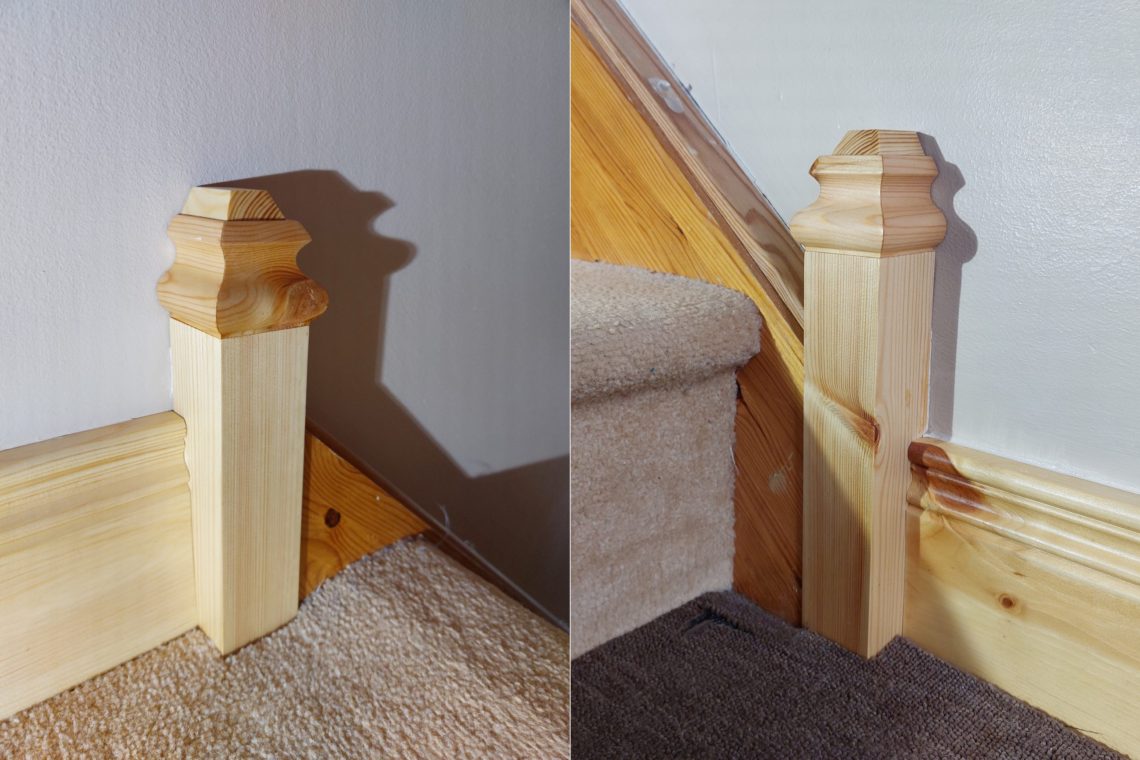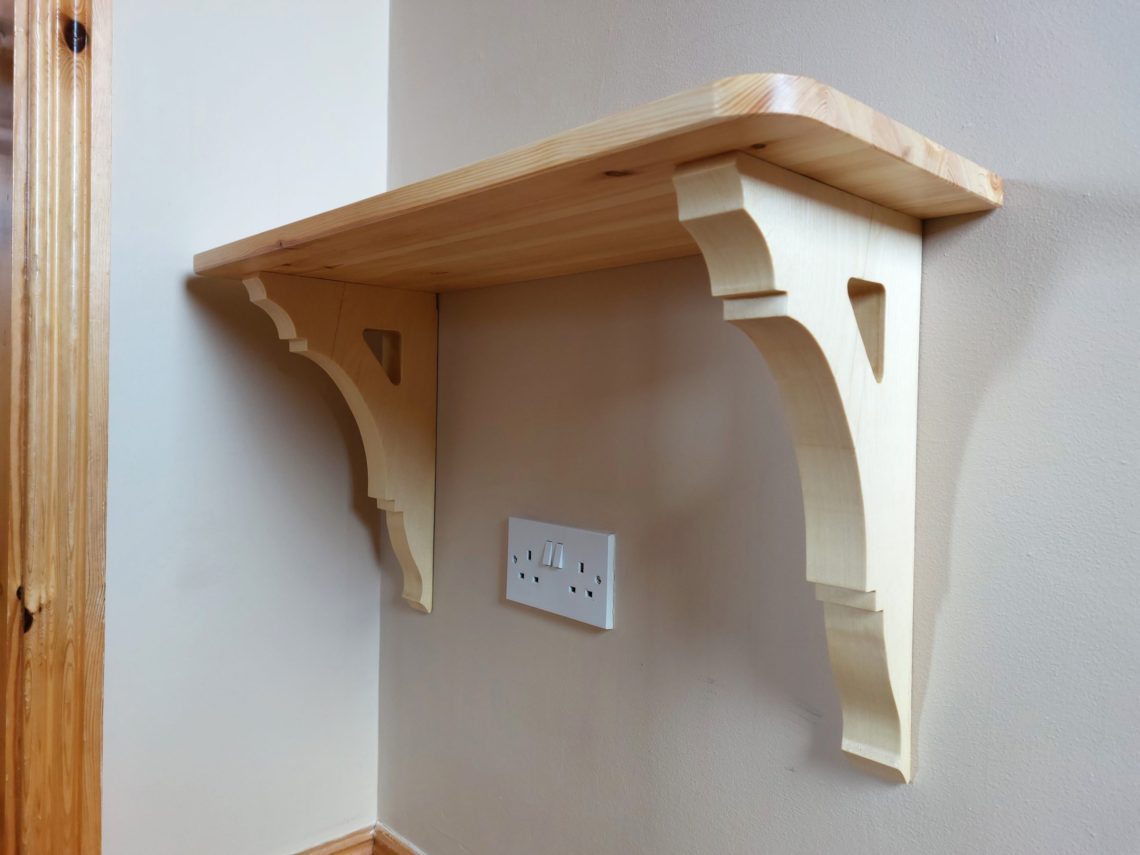-
Chopping board-like coaster
This is possibly the easiest coaster to make, but still, it does what a proper coaster should do. It’s thick and protects the table from heat and cold. It also has a juice groove to hold water that comes from condensation when a cold drink is served on a hot day. Everything you would expect from a coaster is here but it looks like a miniature chopping board. In fact, this block of wood was cut off from an old chopping board that cracked and was removed from the kitchen. I started by cutting a disc out, using my jig…
-
PVC storage bins
Made from an old PVC downpipe and scraps of chipboard. I made a few small containers in one go, utilising the whole downpipe off-cut I had. There’s always a need to organise something in the workshop and improve workflow and these containers surely help. Of course, there is also an idea I can’t resist – upcycling things – probably that was the main reason to make them. Just a simple project, a little messy but you don’t always work with timber and using other materials makes the work more interesting, sometimes they just make more sense for the project. I…
-
70-degree table
I’ve always needed 2 coffee tables, one of them had to be more portable than the other and that determined its size and weight. This is the secondary one, when not in use, can be pushed away and partially nested into my bookcase. Its shape and height are carefully chosen and designed to slide into the space below the base and the 2nd tier. Most of the angles in this table are around 70º – the opening angle between the feet, the leg’s tilt angle and the top rails bevel – so why not call it a 70-degree table? There…
-
Sanding jig
From time to time I need to sand small parts or flatten a workpiece – this jig comes in handy then! Additionally, it can make edge sanding a little easier when equipped with a temporary fence. It’s made of plywood, timber moulding, a few small bolts, washers and wing nuts. All the parts and materials I needed for building this jig were either reused or I had them in my toolbox, so it saved me a trip to my local shop. Furthermore, the scrap plywood I used, already had the right height, I only needed to cut it to width…
-
Stringer-to-skirting transition blocks
There was always something visually missing between the stringer and the skirting boards, they were simply installed directly beside each other regardless of their shapes. But that was about to change and the stairs were getting an upgraded look. I made 2 transition blocks, slightly thicker than the stringer to create a reveal, I also installed new skirting boards on that wall. The blocks had a core covered with trim bits glued from 4 sides. They were made of pine to match the stringer and skirting boards and fixed to the wall with adhesive and not nails. I started by…
-
Shelf on a cliff
It started as a simple, heavy-duty, chunky outdoor shelf, but it quickly became a project that couldn’t exist on its own. It was just too ugly. Because of the opening underneath it, all of its structure was exposed and it needed to be masked. I decided to use the decorative little fence I made just a few days earlier to cover up the massy pillar. As to that concrete post it was all attached to, it was part of a farm gate, I guess. It has a hook on the side and the area it adjoins to was a country…
-
Decorative little fence
Like a full-size fence, that one also comprised pickets, rails and posts. It was made of scrap wood, but not any wood – those very offcuts came from the building of a real fence. 13 mini pickets in total, 4 of them were longer and served as posts that could be set in the ground. Rails were simplified and they were just perforated steel band straps. Each picket was fixed with screws in 2 places, allowing the fence to be set on a slope. It even came with a setting tool that made the pounding down a little easier and…
-
Radiator shelf
The purpose of this shelf was to fill out an empty space above the radiator, if it was hung somewhere else it’d have a different name. Shelves are the most common and frequent projects that I make. None of them is the same, they’re always unique. Their names have to be unique too. This is just an idea of giving them names instead of numbers. In this project, I used the joints that made the brackets naturally strong and they didn’t have to be reinforced with anything. The board is fixed to the brackets with screws and it has some…
-
Corbel shelf
Both corbels are made from upcycled material, but I saved some time by buying a board for the top instead of making it myself. The shelf is put together with dowels and glue and that way there are no visible fasteners, not to mention its mounting brackets that are also hidden from sight. The corbels are thick and long, they dominate the shelf visually, giving an illusion of sturdiness. Because the shelf is made of softwood, it’s naturally light and all the force that the brackets can take is left for what is going to be put on the shelf.…
-
Reusing a cracked chopping board
It was a beautiful, bamboo chopping board, unfortunately, due to the heat and moisture, it cracked along 2 lines. I didn’t want to reglue it because it looked perfect for some small projects and experiments. I made what I needed in my household – a simple coaster and a soap tray. There was still some crack-free board surface left to use, but I stopped at 2 projects and put the board aside for a while. I started from the coaster, as it was a more urgent thing to have, using a template that I made in the past. I had…









